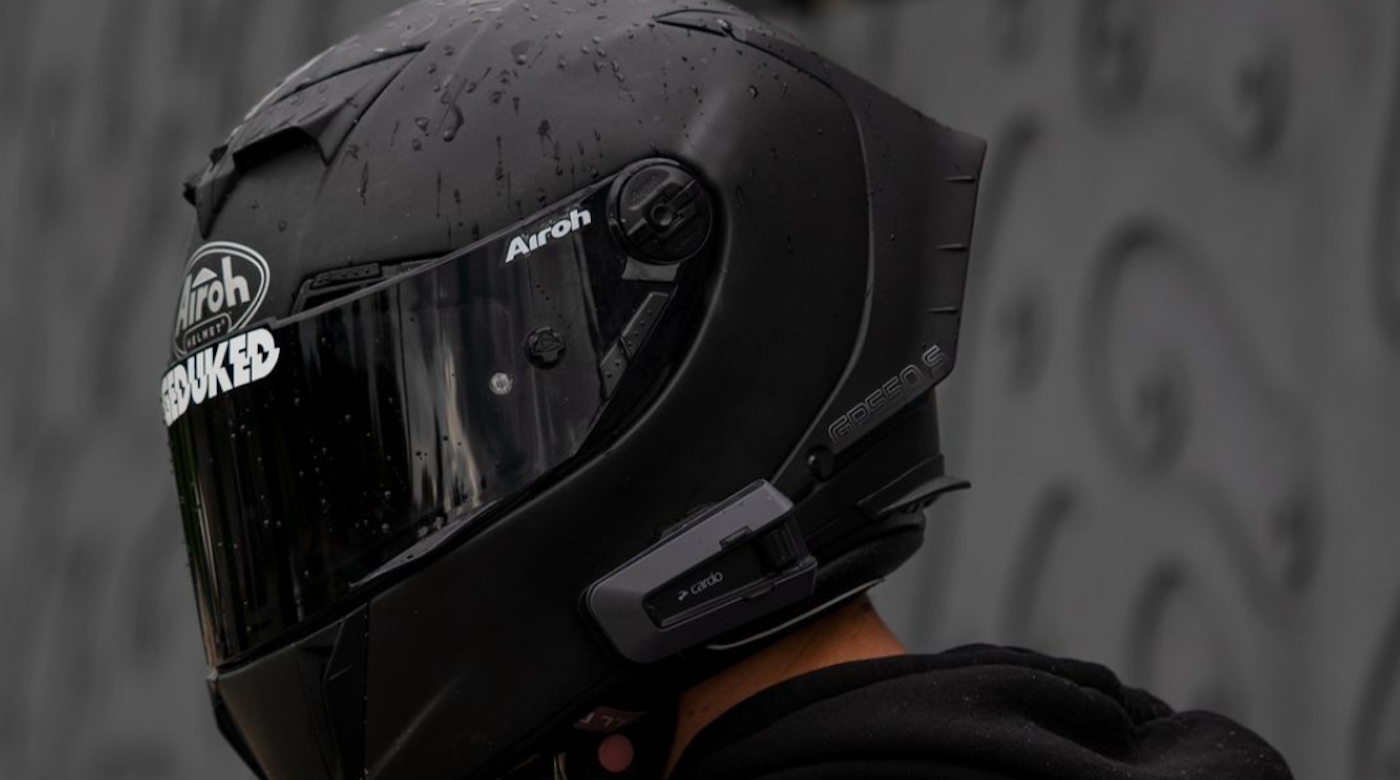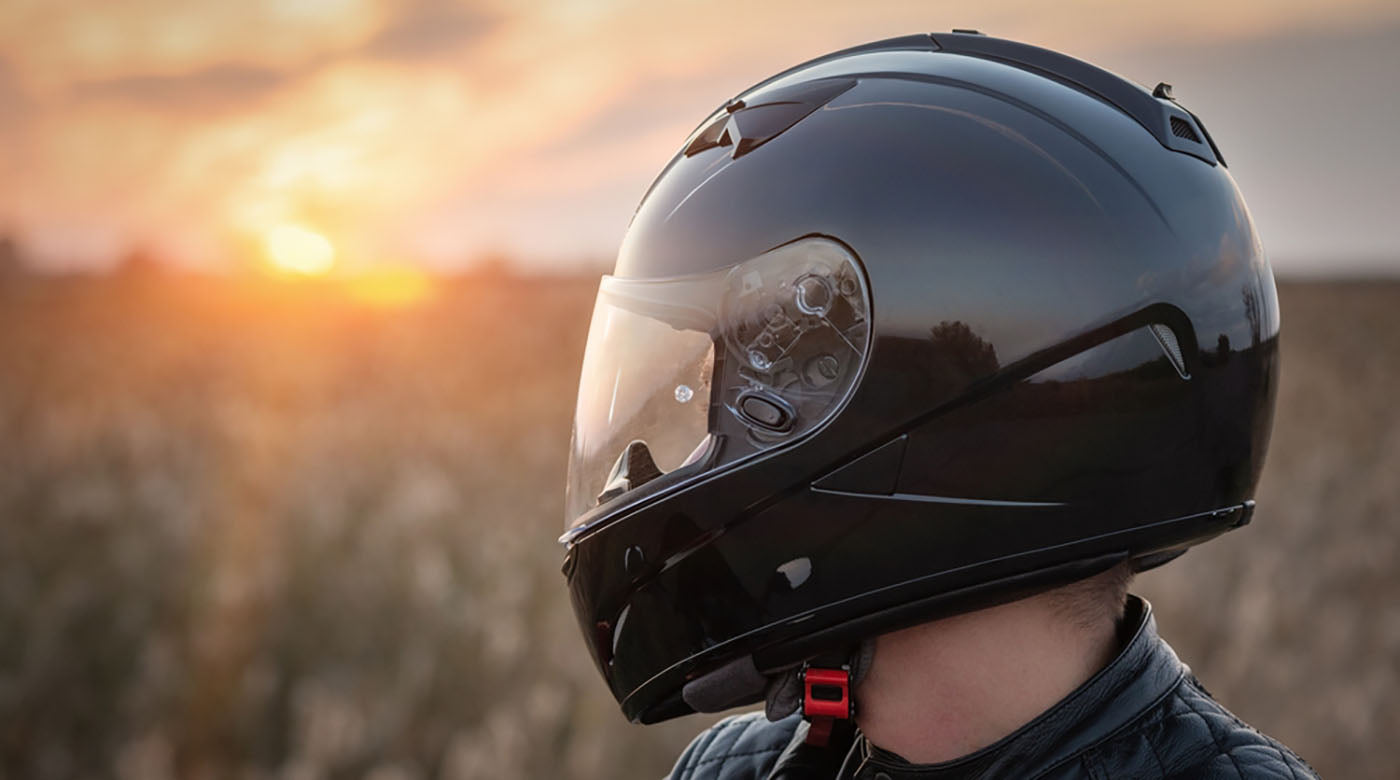You should always make sure you have a reliable safety helmet when riding a motorcycle, but these products don’t last forever. Helmets can degrade over time due to various causes from the weather to frequent impacts. Finding the right time to replace your helmet depends on how you store it, how often you use it and the quality of the helmet itself.
Helmets are made up of various parts, each of which may need to be replaced from time to time. Learn how to inspect your helmet for damage to ensure it keeps you safe on the road.
Understanding Helmet Composition and Degradation
Helmets are your most important piece of motorcycle gear and consist of several key components, each contributing to the overall protection they offer. These include the outer shell made of materials like fiberglass, carbon fiber and Kevlar; the inner padding designed for comfort and shock absorption; and the visor, which protects your eyes from debris and the elements.
- Helmet Shell. The shell is susceptible to UV damage, leading to weakened resins and a faded appearance. Regularly check your helmet’s shell for dents, cracks, peeling or any sign of brittleness.
- Inner Padding. Often made from foam and covered in fabric, the padding can degrade from sweat and hair oils, losing its ability to cushion the head effectively and absorb shocks from collisions or impacts.
- Visor. Whether you wear a half-, full-face or modular visor, the polycarbonate material can develop scratches or become cloudy over time, reducing visibility. Frequent cleaning and timely replacement are important for clear vision to keep you safe on the road.
What Is the Lifespan of a Motorcycle Helmet? What the Experts Say
Just like many safety products, motorcycle helmets have a recommended shelf life. Helmet manufacturers suggest that helmets should ideally be replaced every five years from the date of manufacture, depending on how often you ride. The manufacturer’s recommendation is considered the general rule of thumb for the natural aging process of the materials used in helmet construction, such as the breakdown of glues and resins that hold the helmet components together.
The 5-year rule may seem like a lot, but it mostly applies to bikers who hit the road every day. Riding for hours on end will only cause your helmet to degrade that much faster. Sweat, the sun and other environmental factors can cause damage and reduce the life of the helmet over time. If the helmet is cheaply made, the chin strap and inner padding may start to disintegrate after a few years.
If you are an avid motorcyclist or are wearing a used helmet, check the sticker or imprint on the interior of the helmet indicating the date of manufacture. This date will help you know when the helmet’s theoretical safe usage life is approaching its end. If it’s older than five years, continue using it at your own risk. And, if your helmet has been involved in an accident, replace it immediately — even if there is no visible damage.
Remember that your helmet is your first line of defense against a serious head injury if you get into an accident. You should always use a Bluetooth motorcycle headset when riding in case of an emergency so you can contact the authorities or your loved ones for help.
However, you might not have to replace your helmet that often if you’re more of a weekend rider. It’s always best to store your helmet in a dry, room temperature location. This will help your helmet last as long as possible.
Be sure to inspect your helmet regularly to make sure all the components are still intact.
When to Replace Your Motorcycle Helmet
As your helmet continues to age, you need to watch out for warning signs that it needs to be replaced, especially if it’s older than five years.
Inspect the following parts every time you ride:
Chin Strap
Your helmet should always fit comfortably on your head. The chin strap allows you to lock the helmet into place so it won’t move out of place if you get into an accident. If this material starts to fray or come apart, you should replace the strap right away or buy a new helmet. The strap may also loosen over time, so make sure it fits properly before hitting the road.
Inner Padding
The inner padding or comfort liner is there to cushion your head against the hard interior. These pads are usually one of the first things to go. Excess sweat and moisture will start to wear away at the glue that holds the head and cheek pads to the rest of the helmet. Cheaper foam inserts can fall apart after just a few months.
If you use Bluetooth motorcycle speakers, make sure they stay clipped to the helmet without sliding off.
Don’t try riding a motorcycle with a helmet with missing pads. This will make the ride more uncomfortable. It will also make the impact that much more painful if you get into an accident.
You can always try replacing the foam by taking it to a helmet manufacturer or bike shop if you’re not ready to replace your helmet.
Outer Shell
The outer shell is the most important part of the helmet. Most helmets are made with fiberglass, carbon fiber, Kevlar, ABS and polycarbonate. Studies show these materials will degrade naturally when exposed to UV sunlight for long periods of time. Manufacturers add a stabilizer that can help reduce this effect, but the sun will continue to damage the exterior.
Look over the outer helmet shell to see if the colors have faded. Some materials will turn a dull yellowish color, a sign that the sun is starting to affect them. You should also watch out for cracks, fractures and other signs of structural problems.
Maintenance Tips to Extend Your Helmet Lifespan
While you should always adhere to the 5-year replacement rule, there are a few simple ways you can make sure you get the most out of your protective gear and prevent premature wear and tear. These include:
- Proper Cleaning. Regularly clean the helmet using appropriate cleaners, especially for the visor and outer shell, to prevent buildup that can degrade materials. Keep the helmet clean by gently washing the exterior with mild soap and water. For the interior, use cleaners specifically designed for helmet pads to avoid damaging the material. Allow the helmet to air dry. Never use heat sources like hair dryers as they can warp the structure.
- Avoid Chemical Exposure. Keep your helmet away from gasoline, cleaning solvents, paints and other potentially corrosive or damaging chemicals. These substances can weaken the helmet’s structure, particularly the outer shell and visor.
- Inspect Regularly for Damage. Frequently check for any signs of wear or damage such as cracks in the shell, loose padding or a frayed chin strap. Early detection of these issues can prevent them from becoming severe problems that compromise the helmet’s protective capabilities.
- Handle with Care. Treat your helmet with care. Avoid dropping it, which can cause unseen damage to the internal foam layer designed to absorb shock. Also, ensure that nothing heavy is placed on top of the helmet, as this can deform the shell and padding over time.
- Store It Properly. Helmets should be stored in a cool, dry place out of direct sunlight to minimize premature aging. A helmet bag can protect it from dust and accidental scratches.
Choosing the Right Replacement Helmet
If your helmet has reached its expiration date or you’ve been in an accident and need a replacement, you need to choose a helmet that is not only comfortable but also meets the requisite safety standards. When selecting a new helmet, consider the following:
- Safety Standards Compliance. Ensure the helmet meets current safety standards according to the DOT (Department of Transportation). A DOT certification means that it meets or exceeds the Federal Motor Vehicle Safety Standard (FMVSS) No. 218.
- Fit and Comfort. Opt for helmets with adjustable cheek pads and straps for better fit and comfort.
- Advanced Features. Consider helmets that offer advanced features like modular design or compatibility with Bluetooth headsets for added convenience.
Stay Safe While You Ride
If you have been in an accident and your helmet collides with another object, it’s best to replace it immediately.
You can never be too careful when using an old helmet. It’s always better to replace them instead of hoping for the best. Regardless of your type of helmet, find a Bluetooth motorcycle helmet headset that fits your make and model.
Shop Our Motorcycle Bluetooth Headsets Here




